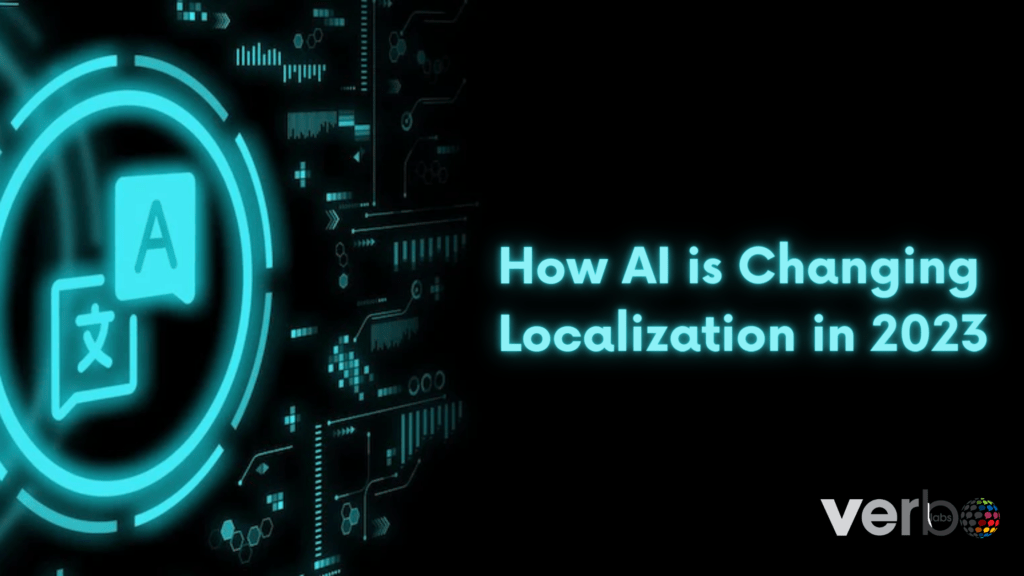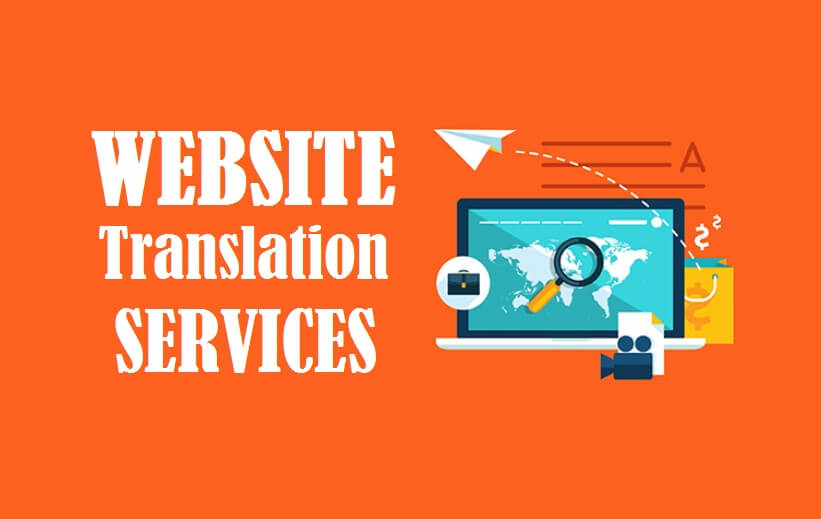The translation and localization industry is rapidly and permanently transformed by artificial intelligence. Both the desire for quick, inexpensive translation and technological trends are propelling innovation. When you put localization and artificial intelligence together, a lot of people immediately think of machine learning (ML). However, while machine learning and machine translation are excellent examples of artificial intelligence technology in use, they are surely not the only ones. AI can be used at every stage of a localization project’s workflow, from translation to quality control. In fact, it appears that localization and AI work best together. This article will examine how artificial intelligence is significantly advancing the field of localization as translation agencies like VerboLabs are able to deliver the solution with smart technology.
The potential for integrating AI, specifically machine learning (ML), deep learning (DL), neural machine translation (NMT), and text-to-speech technology (TTS), into business models are being investigated by practically every industry. The localization sector has witnessed significant advancements in speech recognition, AI, speech synthesis, and NLP technology. However, many contend that no matter how sophisticated algorithmic technology becomes, the human brain will never be replaced. You can switch to someone who is providing professional translation services with smart technology solutions.
But, how Artificial Intelligence Is Changing Localization
1. Latest technologies in AI Machine Localization
Machine translation applications such as Google Translate, Bing Translate, Quillbot, and many others are powered by artificial intelligence. Since its creation in the 1950s, this translation technology has advanced significantly. These days, a whole novel may be translated using AI-based technologies in under two minutes. The localization and translation industries are greatly impacted by this.
2. Artificial Intelligence Automates Localization workflows
Compared to humans, AI can pick up new skills far more quickly. It analyzes enormous amounts of data, pulls information from reports, and recognizes speech and writing patterns. The data is then used to draw inferences using ML, DL, and NLP. AI can recognize and make an effort to grasp slang or idioms by examining millions of data. Here is a Google example that shows how effective its most recent neural machine translation (NMT) technology is.
3. Artificial Intelligence is making Localization efficient and fast
Traditional localization tools may be excellent at precisely translating text, but they’re not always quick enough. The localization process is considerably accelerated using artificial intelligence. Companies may localize their content for a lot less money because AI can complete the task more swiftly. Anyone may obtain speedy, high-quality translations at a reasonable price thanks to the power of machine translation and human post-editing.
4. Artificial Intelligence has the Power to Localize Multimedia Content
Did you know that AI has the ability to localize and translate audio, video, and image files? Websites can now be accessed by more visitors thanks to technology. All of your content—text, videos, files, or images—can be easily localized for your target consumers with the use of AI. For instance, the data science team at Meta developed an AI tool that can automatically translate photos and photographs. What’s more impressive is that the AI uses a similar typeface and style when translating text. The localization business offers a lot of potential for this technology.
When anyone thinks about AI in translation and localization, the first thing that comes to mind is a machine translation. No surprise. It has been around for a long time and has grown significantly. It is the ideal illustration of artificial intelligence in action. However, it’s not the only one. In fact, AI is used in a wide range of sectors of the industry, including terminology, project management, quality assurance, and the actual translation and localization job itself.
5. Machine translation – augmented, adaptive, hybrid, blended
Machine translation has advanced significantly. Natural language processing is increasingly used to produce text that is nearly human-quality. In response, a plethora of fresh ideas have emerged, ranging from hybrid technology to adaptive MT to mixed translation and augmented translation. Let’s take a closer look at these. In mixed translation, pre-populated CAT tool segments for the translator to examine are created using either MT or TM. Similar to the augmented translation, however in this instance, the translator is given MT and TM ideas (rather than pre-populating).
With adaptive MT, systems continuously improve MT output by learning from a translator’s edits in real-time. Keep in mind that these AI methods can be used in conjunction with each other; adaptive MT can be utilized with either augmented or blended translation. Recently, hybrid technology has entered the fight. It seeks to increase translation efficiency by being used to detect frequent problems in text segments, such as typos and named entities, and lock segments as necessary. Additionally, we’ve gotten better at judging MT quality. By calculating the number of modifications translators make to MT-generated content, we can determine how much effort is required to bring it up to par.
6. Data extraction for added context
Data extraction from documents, photos, and graphics is already being done with AI. Efficiency might be greatly increased if massive client documents, enormous style guides, or vast amounts of website material could be handled in a similar manner, extracting critical information, and then incorporating it into the localization workflow. It would provide the crucial background that translators and localizers so frequently lack. And as a result, it would facilitate better translation with fewer client inquiries.
7. Automation of translation workflows
Workflows for translation and localization have been significantly impacted by AI in addition to labor. AI is being used by several LSPs to automate various workflow stages. Project managers can work more productively or even focus on other activities, including client relationship management, thanks to the freed-up time. As AI technology becomes more accessible and affordable, workflow automation is likely to become more popular. Workflow automation will also begin to benefit small businesses and lone freelancers, allowing them to increase productivity by concentrating more on the work itself and less on administrative tasks. In fact, there are a tonne of apps for project management, accounting, to-do lists, and time monitoring on the market, so this is occurring to some extent already.
8 . Terminology mining
Terminology management is an additional area where AI is particularly well-suited. It might be quite advantageous for translation services. They are able to filter, classify, and extract terms from vast amounts of text using AI technology. Technology based on artificial intelligence is not just accelerating this effort but also accomplishing considerably more than what people could reasonably accomplish.
The Concluding words to the above-given words
New career opportunities and positions are beginning to materialize as artificial intelligence transforms the way localization is done. But we’ll also need more thorough quality assurance if localized content has to improve. So it’s likely that roles in this sector will increase. Similarly to this, there will be a higher need for individuals with linguistic experts who can certify and clean that data because AI tools are only as good as the data they are trained on. Traditional localization-dependent businesses seek out solutions that are quicker, more effective, and less expensive. And as a result, we’re witnessing an increasing number of conventional localization methodologies adopt an agile strategy. The journey toward artificially enhanced human intelligence is just getting started, despite the advances we are now observing.



